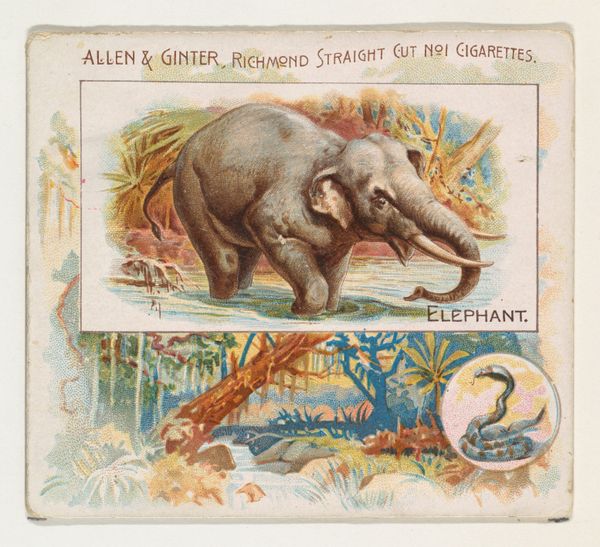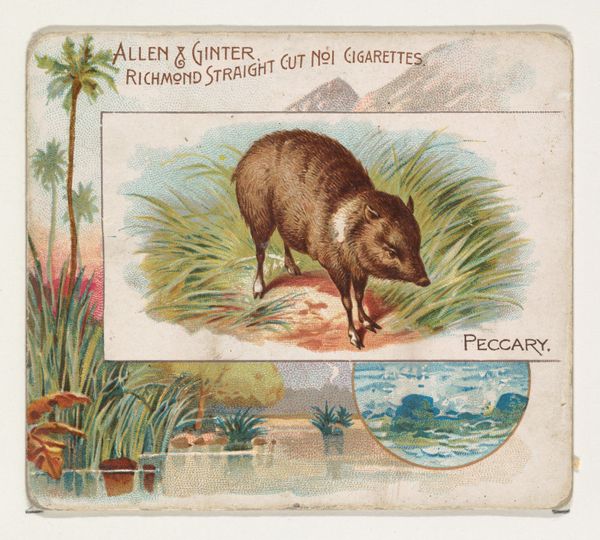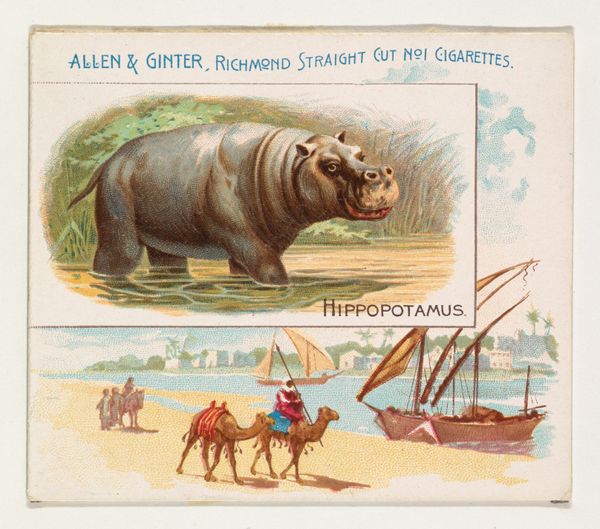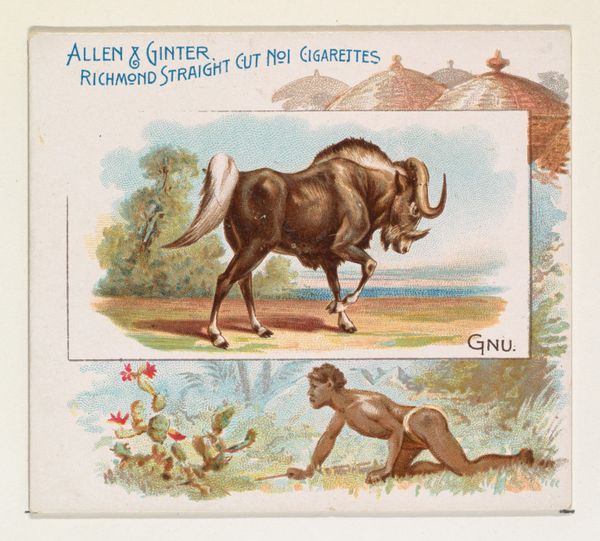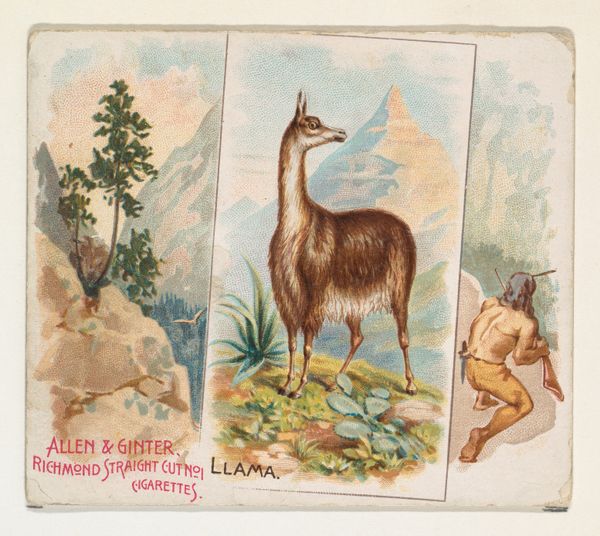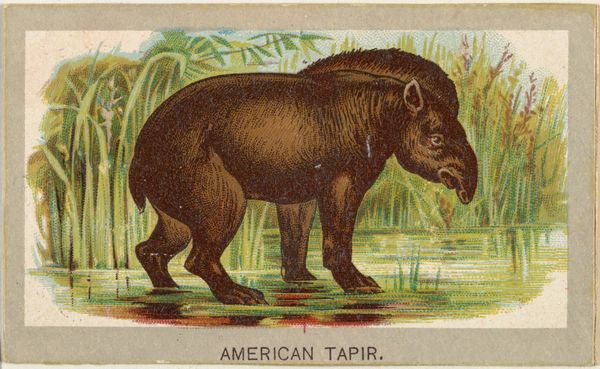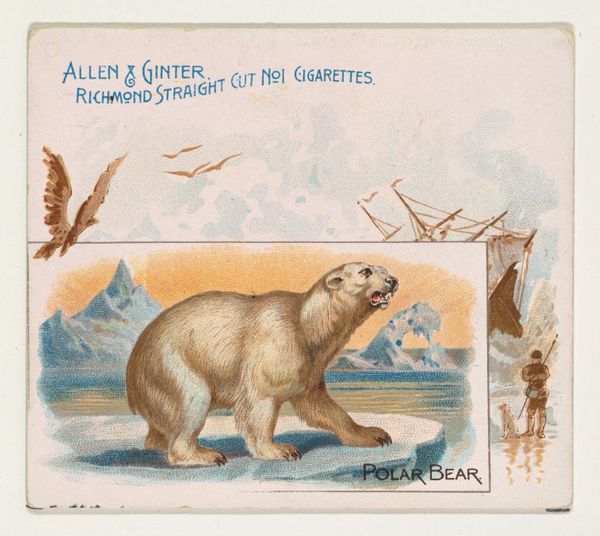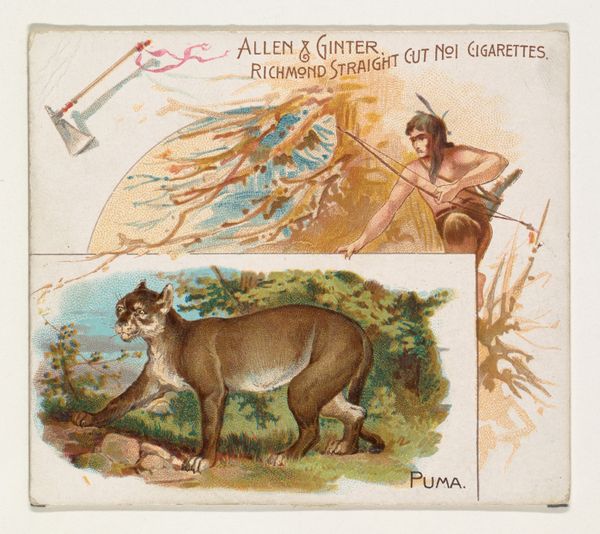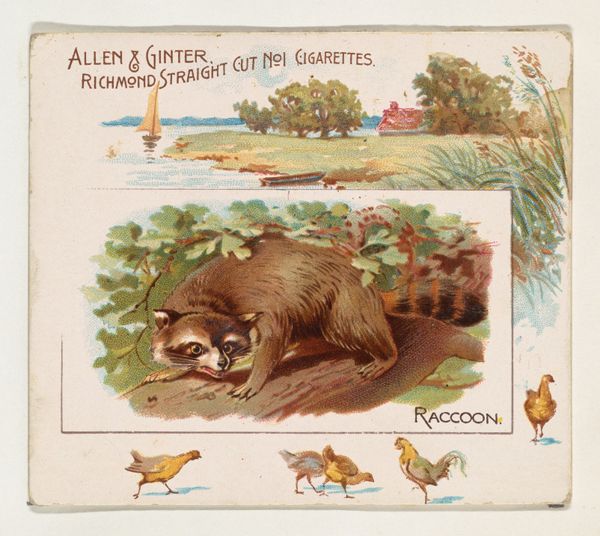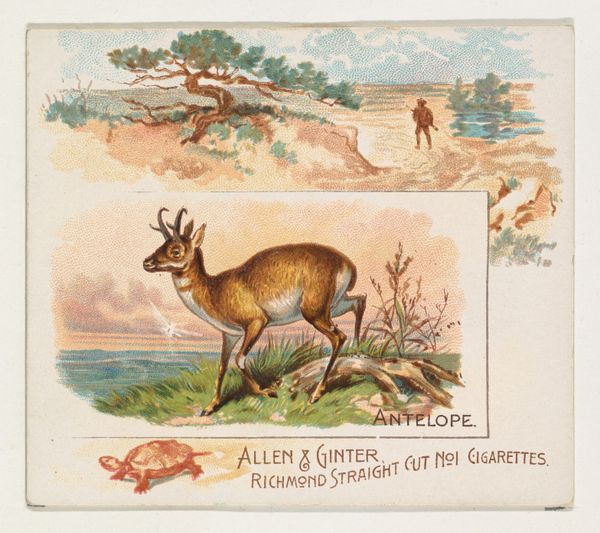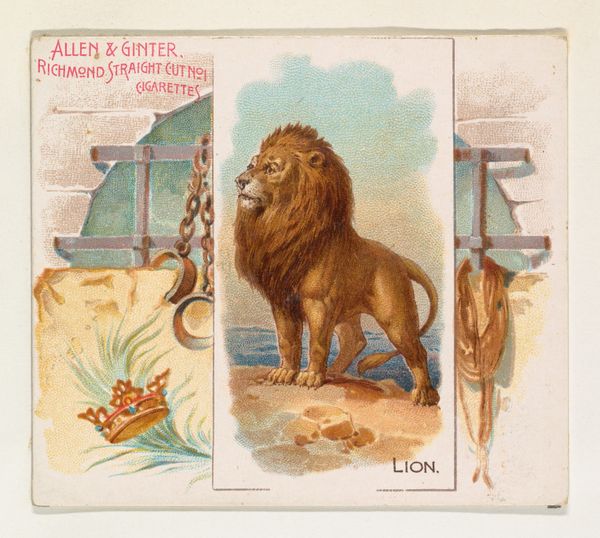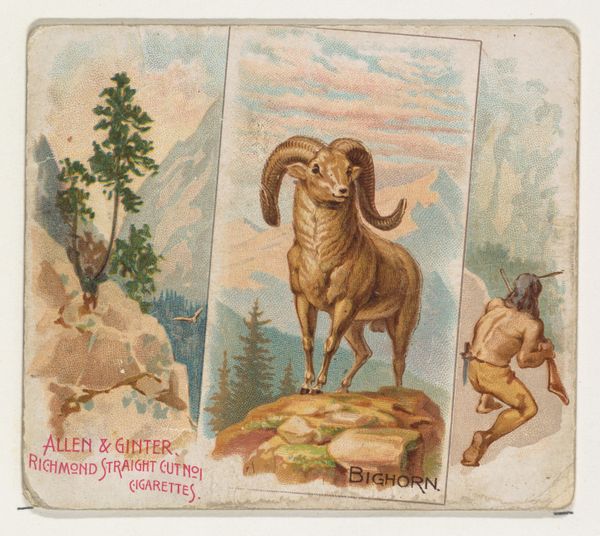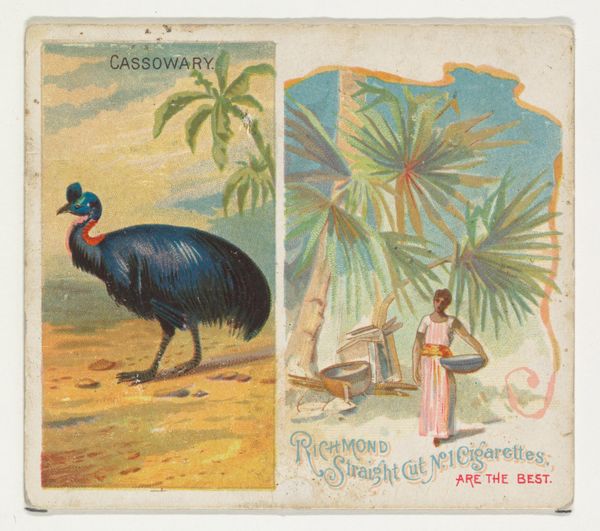
Tapir, from Quadrupeds series (N41) for Allen & Ginter Cigarettes 1890
0:00
0:00
drawing, print, watercolor
#
drawing
# print
#
impressionism
#
landscape
#
figuration
#
watercolor
#
orientalism
Dimensions: Sheet: 2 7/8 x 3 1/4 in. (7.3 x 8.3 cm)
Copyright: Public Domain
Editor: This is "Tapir, from Quadrupeds series (N41) for Allen & Ginter Cigarettes," a watercolor and print from 1890. It’s part of a series, and something about the way the animal is situated in the landscape feels both exotic and a bit unsettling. What do you see in this piece, especially given its origins as a cigarette card? Curator: I see a potent intersection of commerce, colonialism, and the construction of knowledge. These cards, meant to stiffen cigarette packs, were also tools of popular education, shaping perceptions of the world. The “Quadrupeds” series, in particular, speaks to a Western impulse to categorize and possess the natural world. Editor: So, it's more than just a picture of an animal. It has deeper implications? Curator: Absolutely. Consider the context: late 19th century, height of colonial expansion. The tapir, an animal likely unfamiliar to most Western consumers, becomes a commodity, packaged and sold alongside cigarettes. It's a form of cultural appropriation, reducing a complex animal to a mere spectacle for consumption. What's your perspective on this, given your knowledge of post-colonial studies? Editor: I hadn't thought about it like that, but I agree. Seeing it framed as a collectible item normalizes a power dynamic where the West has authority over nature and the rest of the world. It’s like saying, "we can own this, too.” I see the way "orientalism" is coded here. Curator: Precisely. The seemingly innocuous image reinforces a worldview that naturalizes Western dominance. This small card is actually a powerful window into the ideology of its time, demonstrating how consumer culture can perpetuate skewed cultural narratives. How does acknowledging that context change your viewing experience now? Editor: It’s made me realize I have to look beyond the surface, questioning how images, even ones that seem innocent, can carry so much cultural baggage. Thanks! Curator: And for me, it's a reminder of the ongoing need to decolonize not just institutions, but also our ways of seeing. These small objects really pack a punch.
Comments
No comments
Be the first to comment and join the conversation on the ultimate creative platform.
